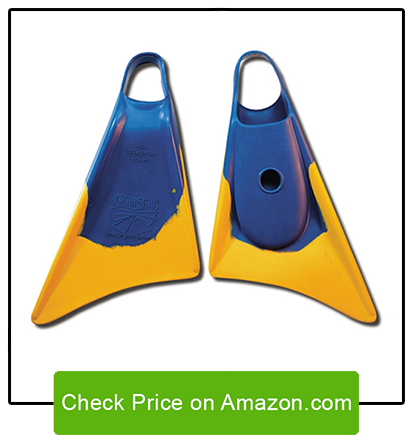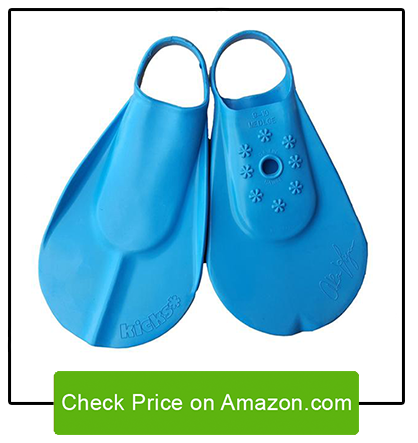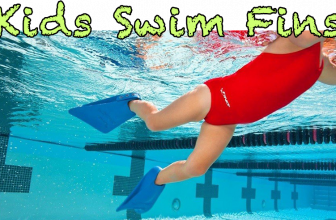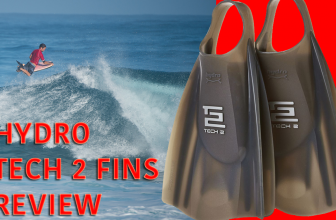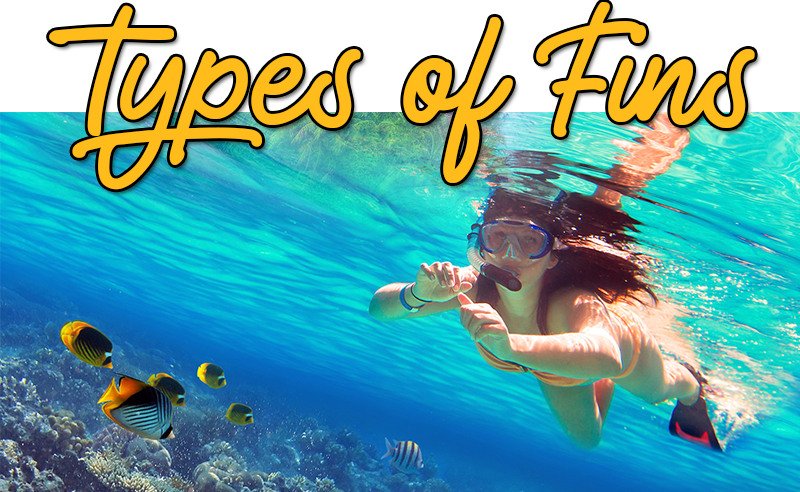
What do swimmers, scuba divers, and snorkelers have in common?
Bodysurfers and bodyboarders have it too.
More...
Aside from thriving in ocean environments, these people need a good pair of fins! A fin is defined as any extended appendage that is used to steer, balance, and propel the body to cover greater distances at shorter intervals when in the water.
Much like a sea animal’s flipper, fins for swimming, diving and surfing are important for stability, balance and changing direction.
Different fin types and what they are best used for
There are different fin shapes, sizes and lengths because different fin attributes bring about a different fin performance. When you need to cover long distances, you also need a longer fin blade for extended propulsion. When swiftness in short distances is what you are after, you can opt for a shorter fin template.
To pick the right set of fins— whether you are going to use them for training, diving or surfing— you first need to understand what your chosen activity is asking for. Here are the different types of fins, their characteristics, and what they are used for:
Bodyboard Fins
[go_pricing id="bodyboard_fins"]
When you see fins that have a short and wide template, they are most probably fins for bodyboarding.
In order to catch a wave before it becomes too steep, you will need a lot of acceleration while staying stable in quick successions.
The short and stubby fin template does exactly this.
If you had longer fins, it would be more difficult to kick rapidly with them because of the length and drag of the fin blade.
Bodyboard fins are typically made from rubber; with some advanced models boasting of dual density rubber.
Dual density means that the rubber used for the foot pocket is softer and lighter than the rubber used for the fin blade to make the fins comfortable to wear for long periods of time. The fin blade, on the other hand, needs to be stiff in order for it to create propulsion.
Here are our top 2 picks for bodyboard fins:
Churchill Fins
The Churchill Makapuu fins are a distinct blue and yellow pair that features an original and patented dolphin fin design.
The fin blade shape recreate the same amount of power and acceleration as that of a marine animal, which gives you maximum efficiency and control in the water without losing speed.
The Churchill fins revolutionized bodyboarding by making it easier for the rider to stand up on his bodyboard while riding.
Dubbed as the “original swim fins,” this pair of fins has been popular amongst the bodyboarding crowds since 1936.
Stealth Fins
Stealth Fins are fins made for high performance bodyboarding.
The fin template was designed to help you cut threw the water with as little drag as possible.
These bodyboard fins are made from the finest Malaysian rubber and they feature dual density materials that enable top comfort for the rider without sacrificing power and propulsion.
The stealth fins also come with drain holes called “blow hole vents,” which allow for excess water, sand, and stones to be flushed out as you surf. The blow hole also serves as a drain so the fin doesn’t get flushed out of your foot.
The secret to this pair’s high performance is in the angled rails. This rail feature is responsible for the rapid busts of energy the rider will get with short and quick thrusts.
Bodysurfing Fins
Bodyboarding and bodysurfing fins share a lot in common because both involve the need to catch a wave early. Bodysurfing fins are also on the short and wide side because this minimizes the drag the rider feels in the water. Bodysurfing fins are also made from dual density rubber materials, which allow for comfortable foot pockets and rigid fin blades. Bodyboarders and bodysurfers can use their fins interchangeably because both offer the same effect.
Here are our top 2 picks for bodysurfing fins:
Da Fin
Watermen from all over the world have said good things about Da Fins because they are super comfortable to wear.
Made from 100% natural Malaysian rubber, Da Fins are super lightweight but also designed to give maximum stability and power while on a wave.
Da Fins are also ergonomically designed to be worn on either foot so you won’t ever make the mistake of putting the wrong fin on.
Da Fins are the official fins of the United States Lifeguard Association and the Hawaiian Lifeguard Association.
Duck Feet Fins
We mentioned earlier that bodyboarding fins and bodysurfing fins are interchangeable. However, the Voit Duck Feet Fins were specially designed for bodysurfers.
The fin blades are symmetrically designed to be more hydrodynamic, which gives the bodysurfer a greater amount of propulsion while barely exerting effort.
This is why the duck feet fins are better used for bodysurfing. When used for bodyboarding, the fin blade can be slightly too long and the propulsion exerted can be a bit too much especially when the waves aren’t big and powerful.
When you need to consider extra power into your routine, the Voit Duck Feet Fins are highly recommended.
Pool Training Fins
The most obvious difference between pool training fins and bodyboarding or bodysurfing fins is that pool training will be done in fresh swimming pool water.
The different buoyancy rate in fresh water makes the water more “loose” than saltwater; therefore, you don’t need to have extra propulsion fins to do your usual laps in the pool.
Pool training fins are also narrower in template and they do away with the channels or “grips” that you can find in bodyboard or bodysurfing fins.
Pool training fins are also longer and their templates are flatter and less angled. Most pool fins also don’t have a drain hole, as there is a decreased likelihood that unwanted debris would get stuck in the foot pocket when in the pool.
Here are our top 2 picks for pool training fins:
FINIS Yellow Zoomers Gold
These pool fins have very short blades that align with the foot’s natural angle to help the swimmer make rapid kicks at shorter intervals.
The shortness of the blade allows for kicks to be really quick and short, which is needed in competitive swimming where best times are recorded.
These fins are ideal for endurance and strength training for the legs.
Kiefer Training Swim Fins
The Kiefer Training Swim Fins will be your pool workout best friend.
They are soft and comfortable enough to be worn for extended periods of time so you’ll be able to clock in extra training hours with them on. These fins feature an extra short fin blade with an added curve in the middle to provide more ease for the swimmer when doing rapid kicks.
The lightness of the material also prevents overtraining your muscles, which often happens when you need to over exert your strength just to reach a satisfactory level of fin efficiency.
Scuba Diving Fins
Scuba diving fins are the most different from the bunch because they need longer fins for deep sea exploration. Unlike bodyboarding, bodysurfing or swim training, the focus of scuba diving is in the consistency of slow and long strokes. You don’t need to accelerate at short intervals when diving so you are exchanging the fin feature that allows for rapid bursts of power for more deliberate and stable strokes.
Because you will be experiencing more drag with longer fins, it is important that your diving fins are comfortable to wear. The last thing you want to experience is a cramp when you’re some fifty feet below the sea.
Here are our top 2 picks for diving fins:
U.S. Divers Proflex FX Fins
The U.S. Divers Proflex FX fins are an intricately designed pair of diving fins that marry both form and function.
When used, you hear a subtle “snap” from the narrow fin blade because of the holes positioned near the rails.
These fins are made from dual composite material; while the long fin blade is stiff, the foot pocket is soft and adjustable to ensure a snug and comfortable fit.
Cressi PLUMA
Which pair of fins is right for me?
To know the right pair of fins for you, consider the activity you will be doing. If you will be bodyboarding or bodysurfing, you need short and wide fins to give you maximum propulsion with great acceleration.
If you will be training your legs for endurance and strength, you will need a short fin made of a more lightweight material so you don’t strain your muscles. If you will dive, you will need longer fins for more consistent strokes.

